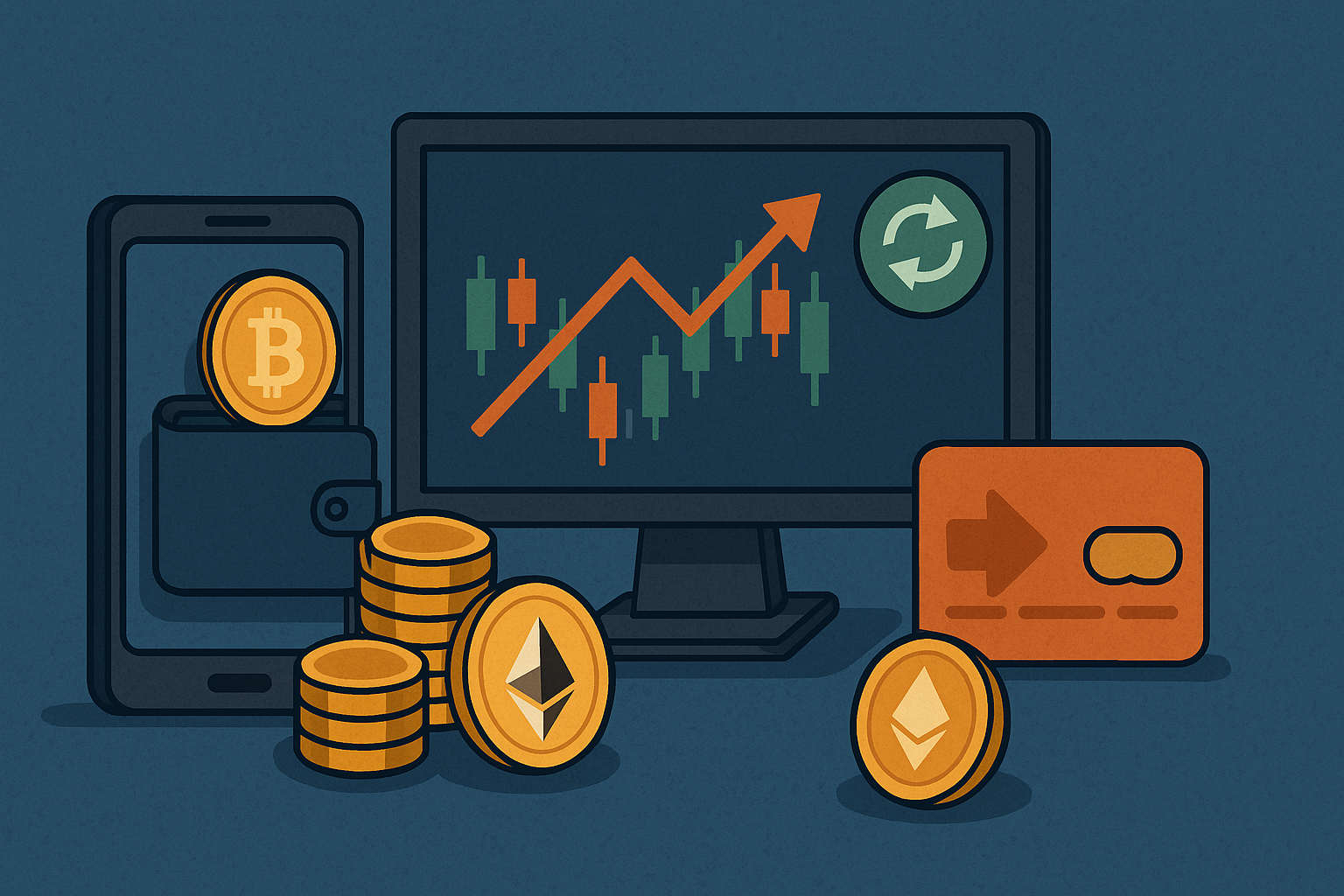Cryptocurrency is becoming more popular every year. More people are buying, selling, and investing in digital coins like Bitcoin and Ethereum. But how do you actually trade these digital currencies?
To do that, you need something called a crypto exchange.
In this beginner-friendly guide, we’ll explain what a crypto exchange is, how it works, and how you can use one safely and easily.
Contents
What Is a Crypto Exchange?
A crypto exchange is a website or app where people can buy, sell, or trade cryptocurrencies. Think of it like a stock market, but for digital money instead of company shares.
You can use a crypto exchange to:
Buy cryptocurrency with regular money (like USD, EUR, or GBP)
Trade one cryptocurrency for another (like Bitcoin for Ethereum)
Sell your crypto for cash
Store your crypto temporarily
Some of the most popular exchanges include Binance, Coinbase, Kraken, and Bybit.
Types of Crypto Exchanges
There are two main types of exchanges:
1. Centralized Exchanges (CEX)
These are run by companies. They act like middlemen between buyers and sellers.
Examples: Coinbase, Binance, Kraken
Pros:
Easy to use for beginners
Support for fiat (regular money like USD or EUR)
Customer support is available
Cons:
You don’t fully control your crypto (the company holds it for you)
Can be hacked if not secure
May require ID to use (KYC — Know Your Customer)
2. Decentralized Exchanges (DEX)
These are run by code and not a central company. They let users trade directly with each other.
Examples: Uniswap, PancakeSwap
Pros:
No sign-up or ID needed
You keep control of your crypto
Lower fees in some cases
Cons:
Harder for beginners
No support if you make a mistake
Often don’t support regular money (only crypto-to-crypto trades)
How Does a Crypto Exchange Work?
Here’s a step-by-step guide on how most centralized exchanges work:
1. Create an Account
You sign up using your email. Most big exchanges will ask for ID to verify who you are.
2. Deposit Funds
You can deposit regular money using a credit card, bank transfer, or PayPal. Some exchanges also accept crypto deposits.
3. Buy Crypto
Use your money to buy a cryptocurrency like Bitcoin or Ethereum. You can buy a whole coin or just a small part of one.
4. Store Your Crypto
After buying, your crypto goes into your exchange wallet. You can leave it there or move it to a personal wallet for extra security.
5. Sell or Trade Later
You can sell your crypto anytime and get money back, or trade it for another coin.
Wallets: Where Is Your Crypto Stored?
Exchanges give you a wallet to store your crypto, but you can also use your own wallet. There are two main types:
Hot Wallets: Online wallets, easy to use but less secure
Cold Wallets: Offline wallets (like USB devices), very secure but harder to access quickly
If you’re holding crypto long-term, cold wallets are safer.
Fees on Crypto Exchanges
Most exchanges charge fees. These can include:
Trading fees (usually 0.1%–1% of your trade)
Deposit or withdrawal fees
Network fees (when moving crypto on the blockchain)
Always check the fee list before using an exchange.
Safety Tips for Using Crypto Exchanges
Use trusted exchanges with good reviews
Enable 2FA (two-factor authentication) to protect your account
Never share your password or recovery phrases
Move large amounts to a cold wallet
Watch out for fake apps or scam websites
Final Thoughts
Crypto exchanges are the gateway to the world of digital currencies. They make it possible for anyone to buy and trade crypto in just a few clicks. While they are powerful tools, it’s important to learn how to use them safely.
Start with a trusted exchange, take time to understand how it works, and always protect your funds. With the right knowledge, crypto trading can be both exciting and rewarding—even for beginners.
